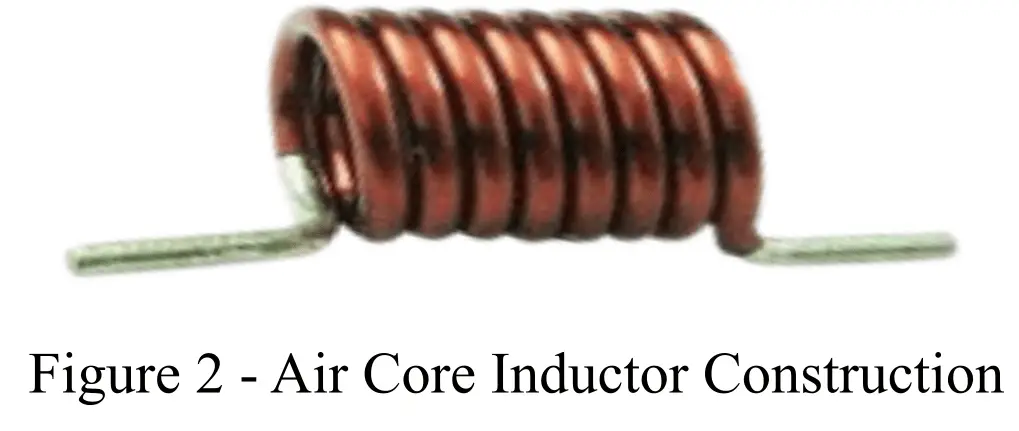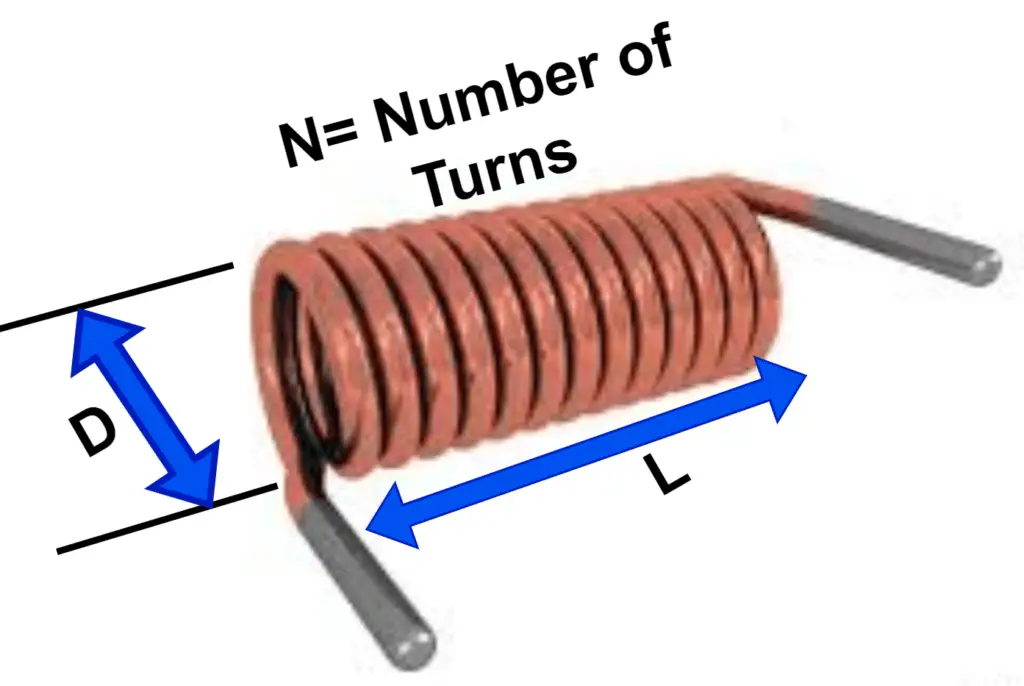In this article, we will discuss the air core inductor, its construction, working, formula of inductance, and applications. So let us start with the basic introduction of inductors.
What is an Inductor and its Types?
An inductor is an electric circuit component that stores electrical energy in the form of a magnetic field. A simple inductor is formed by twisting a wire of finite length into a coil. Thus, an inductor is made up of a conducting wire.
The property of the inductor by which it stores electrical energy in the form of a magnetic field is referred to as the inductance of the inductor. The inductance is usually denoted by the symbol L and is measured in Henry (H).
The circuit symbol of a typical inductor is shown in Figure 1. An inductor has a coil-form structure and it has a finite number of turns.
Based on the core used at the center of the inductor, there are several types of inductors such as air core inductors, iron core inductors, etc. In this article, we shall confine our focus to air core inductors only.
What is an Air Core Inductor?
An air core inductor is one that has no magnetic material as the core at the center of the inductor coil, rather it has free space, i.e. air as the core. Since air is considered a non-magnetic material, thus the air core inductor is a non-magnetic core type inductor.
The air core inductors are used in such applications that require low inductance and high frequency of magnetic reversal. In simple terms, an inductor coil without a magnetic core is termed an air-core inductor. The air-core inductor gives a very low inductance. However, the presence of air in the core part allows this type of inductor to operate at very high frequencies. The circuit symbol of an air-core inductor is shown in figure-1.

Air core inductors do not have any core loss (hysteresis loss and eddy current loss) because there is no magnetic core present. But, the number of turns in the inductor coil should be large to give a significant inductance. For this reason, the air core inductors demand high magnetomotive force (MMF).
Construction of Air Core Inductor
The construction of an air core inductor is quite simple. Rather, it is the simplest type of inductor. It is simply constructed by twisting a conductor wire of finite length into a coil as shown in figure 2.

The construction figure shows that an air core inductor has a gap (air) inside the winding.
Working of Air Core Inductor
When the terminals of the air core inductors are connected to a source of electric supply source, an electric current starts flowing through the turns of the inductor. Due to the magnetic effect of electric current, a magnetic field will establish through the air gap.
As we know, air is a poor conductor of electric current and magnetic field, thus the air core inductor will have very low inductance. Hence, the magnetic field produced by the air core inductor is also weak.
Inductance of Air Core Inductor
Let,

Then, the inductance of the air core inductor is given by,


Also, we can determine the inductance of the air core inductor using the following formula,

Where, N is the number of turns in the coil, A is the cross-sectional area of the coil, l is the mean length of the coil, and µ0 is the permeability of air = 4π × 10-7 H/m.
Advantages of Air Core Inductor
The following are the important advantages of the air core inductor-
- The construction of the air core inductor is very simple and easy.
- The air core inductor is a type of saturation-free inductor.
- There are no core losses in the air core inductor.
- Air core inductors can be made to function at high frequencies.
- At high-frequency operation, the air core inductor does not have core losses and distortion.
- Air core inductors are quite cheap.
Disadvantages of Air Core Inductor
The following are the major disadvantages of the air core inductor-
- The Air core inductor has many turns that make its size larger.
- The air core inductor has a very low Q-factor.
- The Air core inductor cannot give high values of inductance.
- Air core inductors have low magnetic permeability.
Applications of Air Core Inductor
The following are the important applications of air core inductors-
- Air core inductors are used in designing radio frequency (RF) tuning coils.
- Air core inductors are used in snubber circuits, and filter circuits.
- Air core inductors are also used in radio and TV receivers.
- Air core inductors are also used for inter-stage coupling.
- Air core inductors are used to ensure low peak inductance.
- Air core inductors are also used in radio transmitters to reduce harmonic vibrations produced by electromagnetic interference.
Conclusion
Hence, this is all about the air core inductor, its construction, working, and applications. Air core inductors are core-free inductors. These are suitable for such applications where low inductance is required, but they are supposed to function at high frequencies like in TV and radio receivers, and RF tuning circuits.